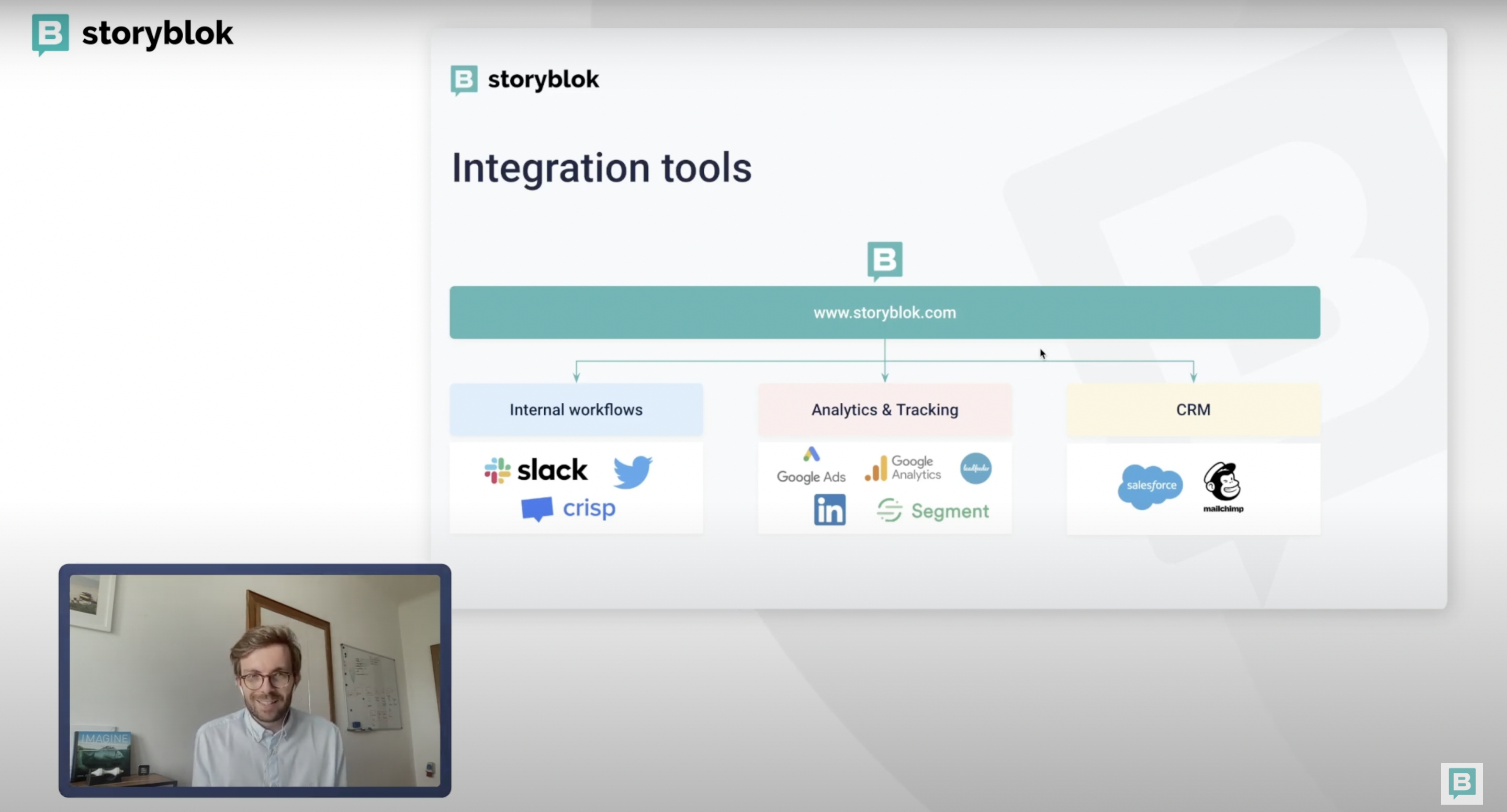SftB#3 Recap: How Storyblok Uses Storyblok - A Content Marketing Year In Review
Storyblok is the first headless CMS that works for developers & marketers alike.
As part of the third edition of our Stories from the Blok event, Thomas Peham, VP of Marketing, and Christel Forey, Content Marketer at Storyblok, share some insights on how Storyblok uses Storyblok to manage its own website.
3 spaces at a glimpse
Having both started at Storyblok roughly a year ago, Christel and Thomas begin by explaining the primary spaces they use daily, namely storyblok.com, the Partner Portal, and the newly added space for storyblok.com/v2.

Who uses Storyblok at Storyblok
From front-end developers to UX and graphic design as well as business users from marketing, sales, partners, and operations. The Storyblok team has more than doubled in the last 6 months and so has the number of users using Storyblok for storybok.com.
First impressions
Speaking of their first impressions with the platform, Christel pointed out that Storyblok was logically categorized to make your life easier, being very user-friendly for developers and marketers with the ability to see previews without having to publish content first and discover mistakes after the fact. For Thomas, the sheer number of pages and the broadness and depth of the page architecture were notable.
How we manage our blog
The internal publishing process starts with an idea before creating a card on Notion, then writing the document in Google Docs and reviewing for grammar and content check. Next comes the design phase, converting content through a Markdown add-on and bringing it to Storyblok for publication.

Search engine optimization (from a content perspective)
One of the primary considerations for content published on Storyblok is SEO. The internal SEO Settings allow for indexing on Google or choosing the no-index option. There are also fields for meta titles and descriptions, slugs, and alternative versions, allowing developers to adjust the SEO settings based on their needs.
Image optimization
Images on Storyblok are highly optimized by default with options for image resizing for SEO and quality, the inclusion of Alt tags and Image captions, and the option for editors to preload images as backups before the real image is uploaded.
Integrations & tracking setup
The team also leverages integration tools such as the Slack integration as part of their marketing workflow. They also mentioned some of the analytics & tracking and CRM tools they use, including Segment and Salesforce. There are also various fields in place for Event Tracking Pixel, Event Labels, and Lead Capture.

Localization (field level localization)
With ‘Field Level Translations,” it's possible to store multi-language content on the field level. While English is the standard language, it's easy to create translations via a drop-down menu in the Storyblok app.
User rights and content workflow
Storyblok is extremely flexible when it comes to controlling who has access to edit content. There are user rights for Account Owner, Admin, Editor, Creator, and even Proofreader. Thomas mentioned the capability to give Proofreaders - for example only access - to certain components and folders.
Small things that make our marketing life easy
Some of the features the team mentioned that make their lives easier included Image Captioning to avoid having to enter captions and center them manually. Also, they can access the CMS from a mobile device and perform edits if necessary.



